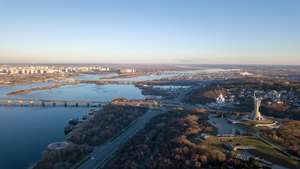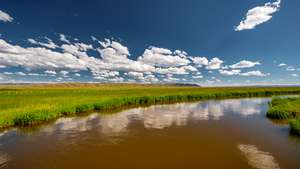
Assessment of the ecological status of small rivers in urban areas.
 Yana Pysanko 1* Ph.D. student
Yana Pysanko 1* Ph.D. student Svitlana Madzhd 1 Ph.D., Associate Professor
Svitlana Madzhd 1 Ph.D., Associate Professor
1 National Aviation University, Kosmonavta Komarova ave., 1, Kiev, Ukraine, 03680 ;
Received: 12/06/2018, Accepted: 12/29/2018, Available online: 12/29/2018.
DOI: https://doi.org/10.32557/useful-2-4-2018-0006
HDL: https://hdl.handle.net/20.500.12334/90
*Corresponding author e-mail: yanakulynych45@gmail.com
Under a creative commons license. Volume 2, Issue 4, 2018, pages: 56-62.
Plagiarism was checked by Grammarly
Author Keywords: small river, urban area, urban river.
Abstarct
Rivers are important components of many urban systems, and research into urban rivers are considerable research. The object of the research is technogenically transformed aquatic ecosystem of small rivers passing through urban areas of Kyiv city. These small rivers are tributaries of the Irpin River. The study used an ecosystem-basin approach, statistical processing of data. The complex research on patterns of their development for the long-term period were made, the quality class of water and indexes characteristic were ostended.
1. Introduction.
The majority of the world's population, according to the UN Population Fund, lives in cities. In Ukraine this number is 29.5 million people, which is 69.23% of the population. Given the importance of cities for the life of the population, there is a need to study urban systems, to understand the main aspects of the structure and processes that develop in the urban environment, in the interaction of man with the components of the environment. According to European experts (Sukopp, 1987), the area that is affected by the city is a thousand times bigger than its own size. The negative impact of urbanization is manifested in the concentration of a large number of industrial enterprises in a small area, in the pollution and consumption of resources. Moreover, this influence extends to all components of the natural environment - the air basin, soils and water bodies, it also affects the health of the population.
References
[1] Sovhira S. V., Hоncharenko H. Ye., Honcharenko V.H., Berchak V. S. 2016. Methodology of studying the ecological status of small river basins. Publisher Sochinskyi M. М., 289 p.
[2] Vyshnevskyi V. І. 2011. Dnieper river. Interpres LTD, 384 p.
[3] Bülent Cengiz. 2013. Urban River Landscapes, Advances in Landscape Architecture, Murat Özyavuz, IntechOpen, DOI: 10.5772/56156. Available from: https://www.intechopen.com/books/advances-in-landscape-architecture/urban-river-landscapes DOI: https://doi.org/10.5772/56156
[4] Francis Robert. 2012. Positioning urban rivers within urban ecology. Urban Ecosystems. 15. P. 285-291. DOI: https://doi.org/10.1007/s11252-012-0227-6
[5] Revitalization of Urban River Spaces. 2012. Urban Rivers – Vital Spaces. 327 p. Available from: http://www.upv.es/contenidos/CAMUNISO/info/U0643715.pdf
[6] Samoilenko V.M., Veres K.O. 2007. Modeling of urban-basin geosystems Моделювання Nika-Center, 296 p.
[7] Madzhd S.М., Kulynych Ya.І., Iavniuk А.А. 2017. Environmental assessment of anthropogenically-modified systems of the Irpin River. Visnyk. NAU. No.2. p. 93–98.
Please cite as: Y.Pysanko, S.Madzhd “Assessment of the ecological status of small rivers in urban areas.” USEFUL online journal, vol. 2, no. 4, pp. 56–62, December 2018. DOI: https://doi.org/10.32557/useful-2-4-2018-0006







Comments